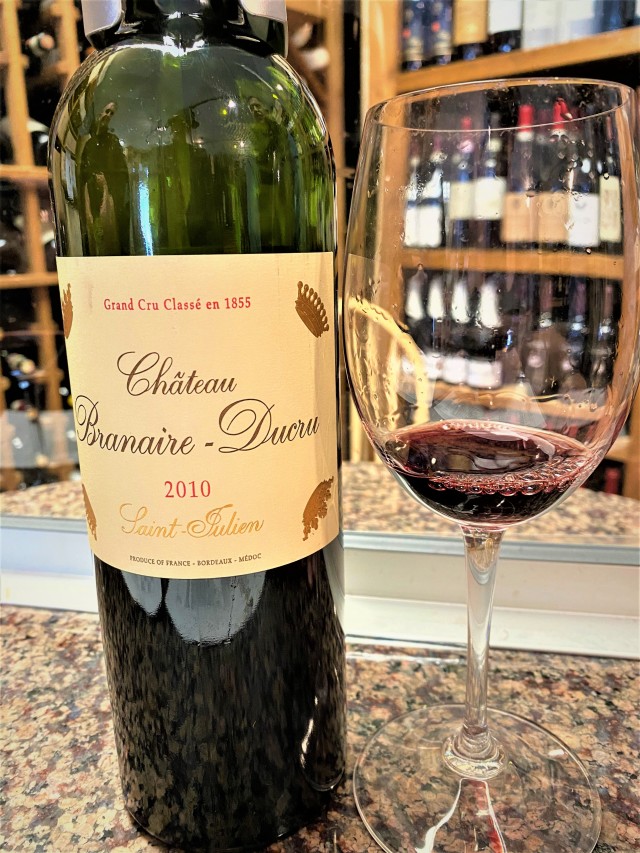The Fine Wine Source did something to The Wine Raconteur and The Wine Raconteur, Jr. that I have never encountered before. We had tastings from two classified growths from the Commune of Saint-Julien, and to me this is rare, because seldom have I even encountered two different wines from this commune on a wine carte, unless the restaurant has a spectacular cellar (and I have been fortunate to have been in some restaurants like that, but I don’t possess a wallet that would allow me to be that grand). I say this, only because in my world this is a very rare situation and I was going to make the most of the tasting.

The Commune of Saint-Julien is situated between two other communes that are considered powerhouses of the Medoc, namely Pauillac and Margaux (both of which have First Growth wines). In the old days, the northern part of Saint-Julien which part of abuts with Chateau Latour were referred to as the masculine half of the commune, because Cabernet Sauvignon was so dominant, while the southern part of the commune was referred to as the feminine half, because the wines were more mellow and Merlot seemed to shine more as the vineyards got closer to Margaux. There are a few plots that have been delineated as part of Saint-Julien, even though they are found in Cussac-Fort-Medoc and Saint-Laurent-Medoc. Until recently, I only had the fortune to have had five classified growth wines and a few other wines from Saint-Julien.
Chateau Branaire-Ducru Saint-Julien 2010 is a Fourth Growth from the 1855 Classification of the Medoc. The estate was founded by Jean-Baptiste Braneyre in 1680 and realized that Cabernet Sauvignon was the variety for the land, over the years his name on the estate changed in spelling to Branaire. Patrick Maroteaux, and ex-banker became the current owner of the estate in 1988 and he even increase the vineyard to fifty hectares. The property at one time was part of Chateau Beychevelle, but was split off in the 17th Century to cover debts of the owners. Under the new ownership the winery underwent a complete renovation and modernization. The wine is Cabernet Sauvignon (usually the highest percentage found in the wines of Saint-Julien) with Merlot, Cabernet Franc and Petit Verdot in the mix and the wine spends eighteen months in oak, and then rests in the bottle after that, before it is released. On the average, the wines from this chateau are traditionally felt that they needed ten years of cellaring, before they really show their charms. We had a chance to enjoy this wine at its considered prime and even being poured using the Coravin system, this wine was excellent. The fruit and the tannins had combined into a complex treat that just made me smile and made me reflect on how fortunate I was to enjoy wines like this so early in my life and to let my tastebuds and memory revel in the moment.

